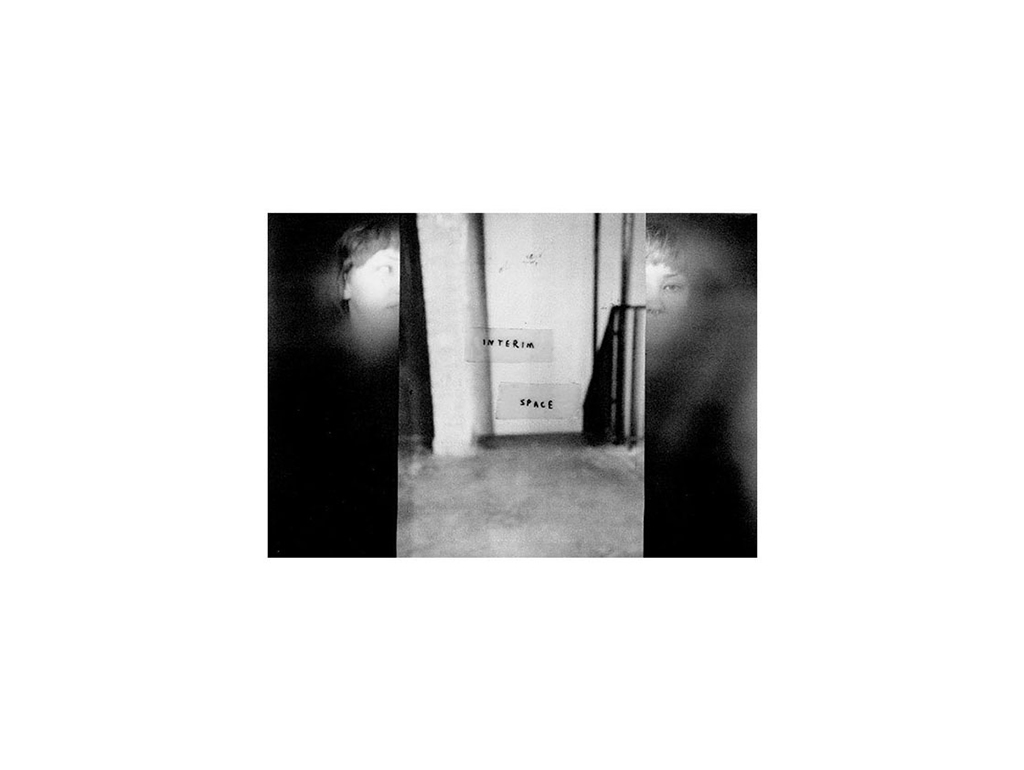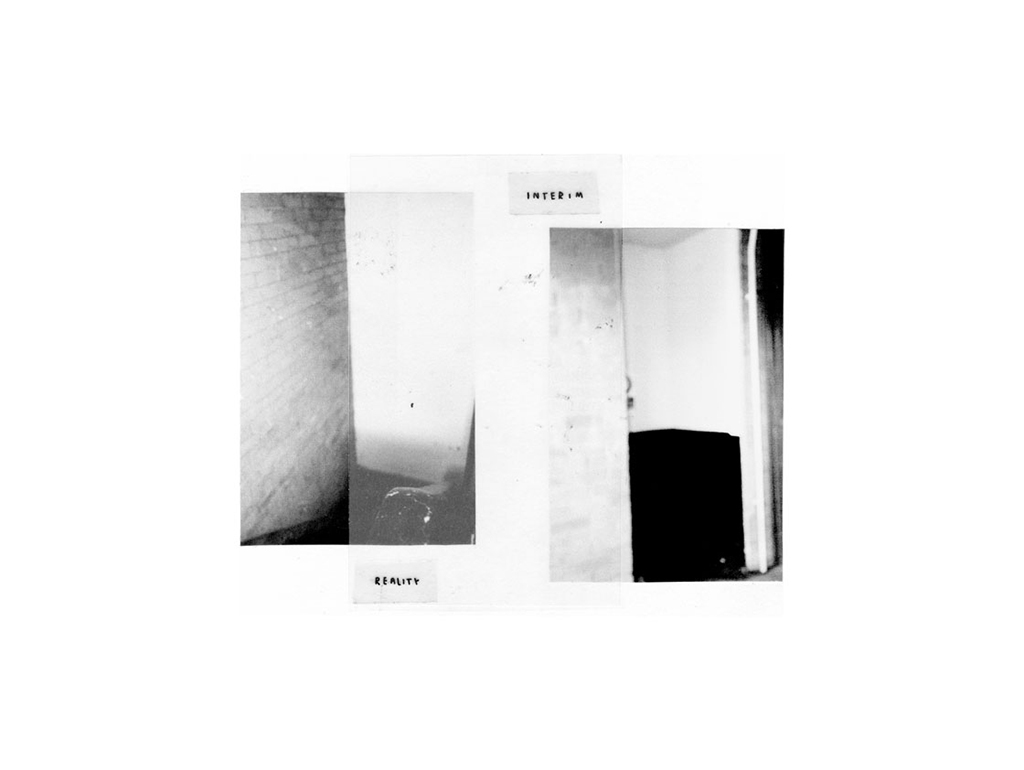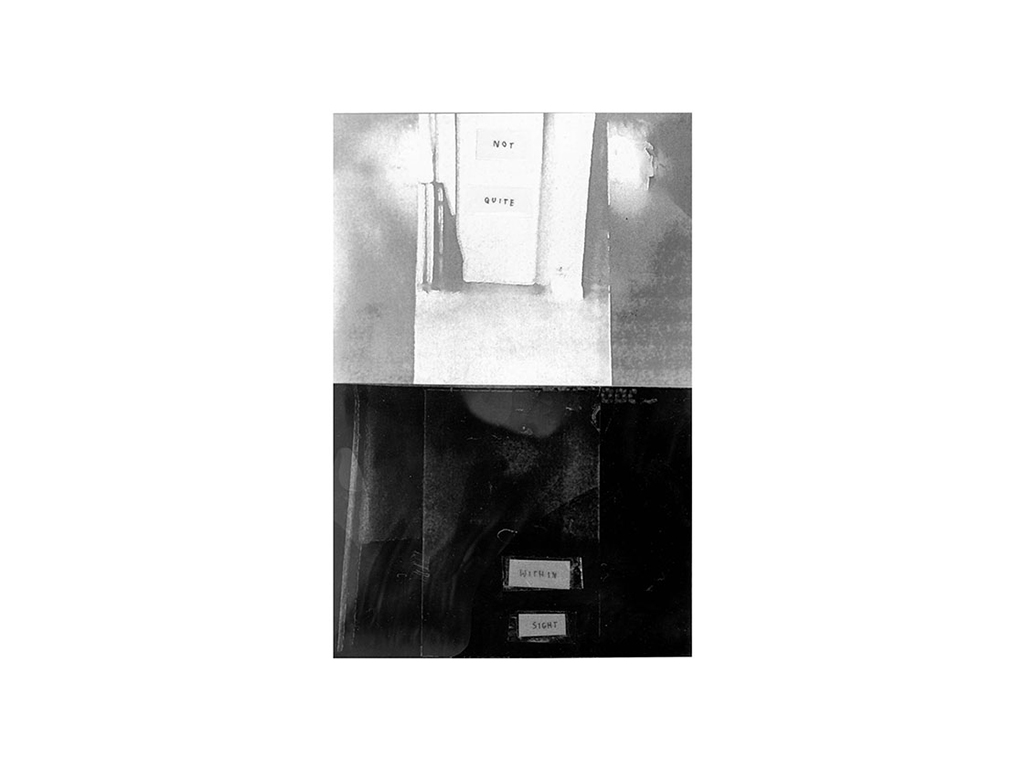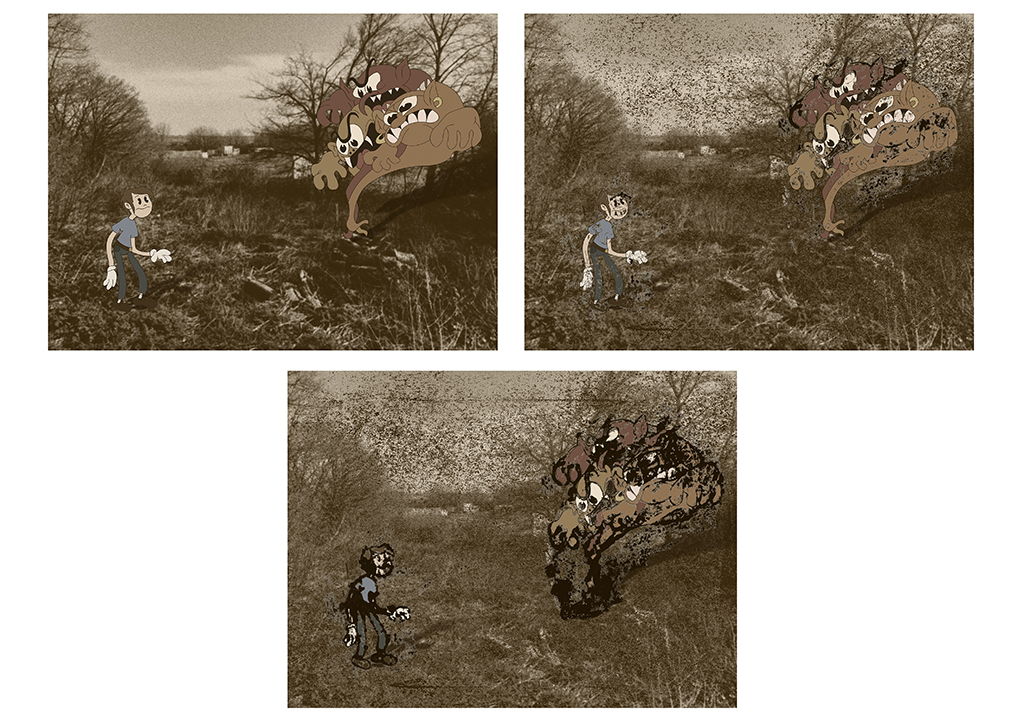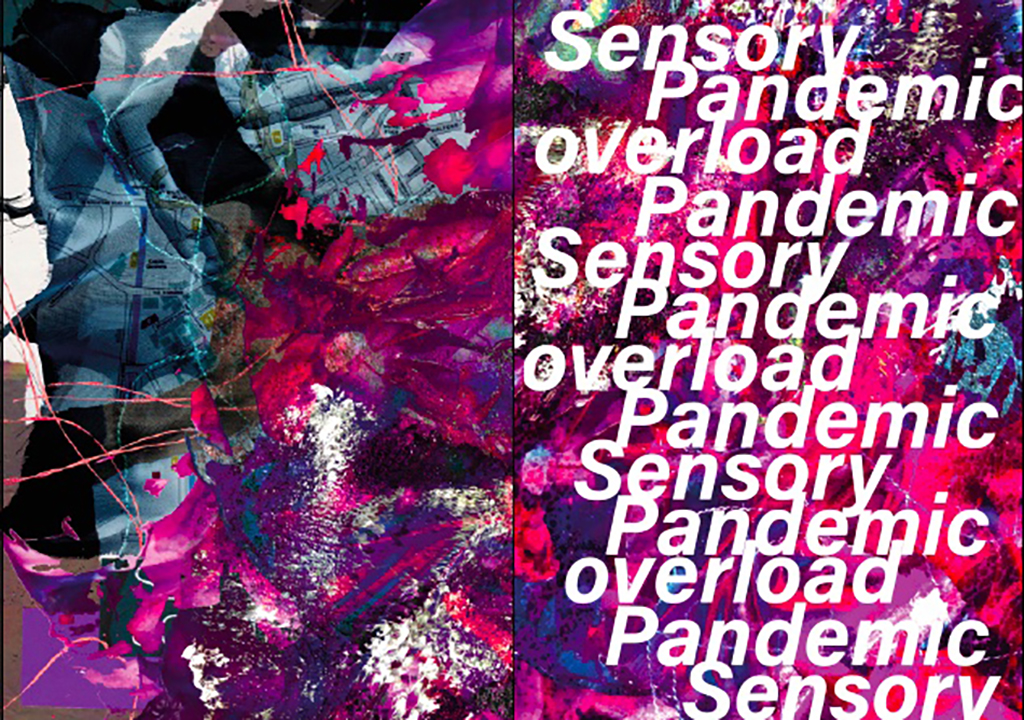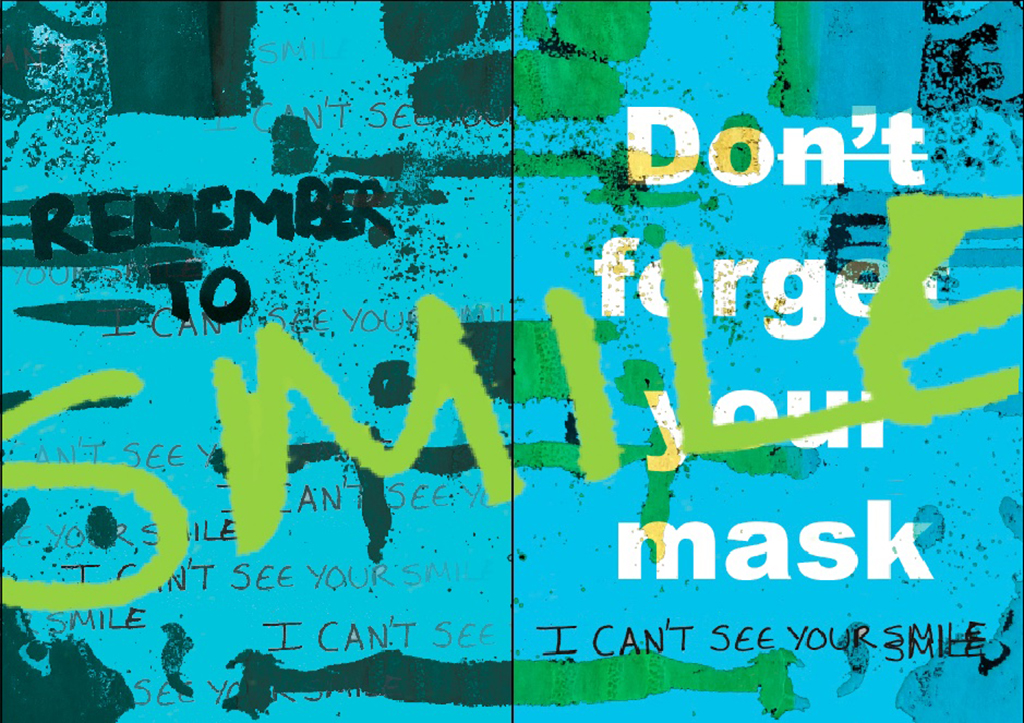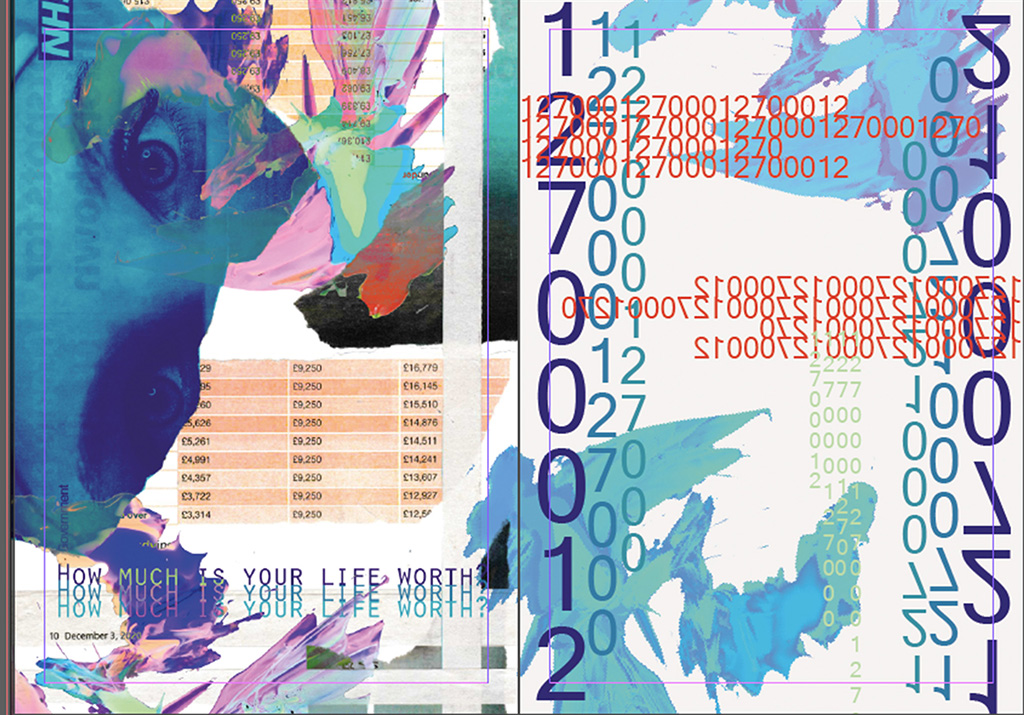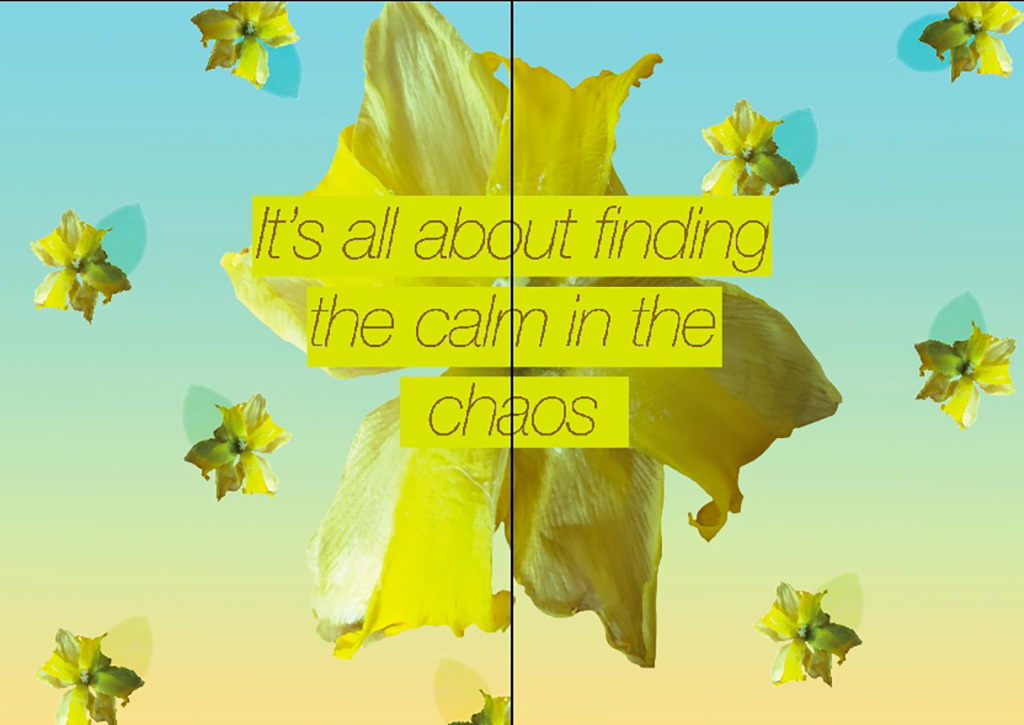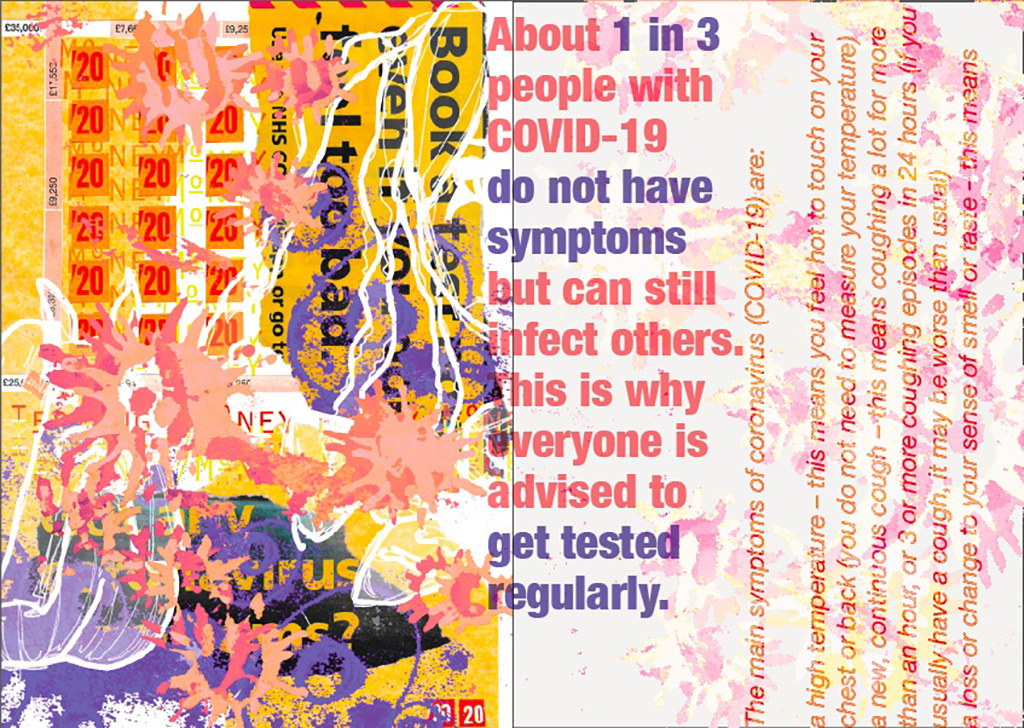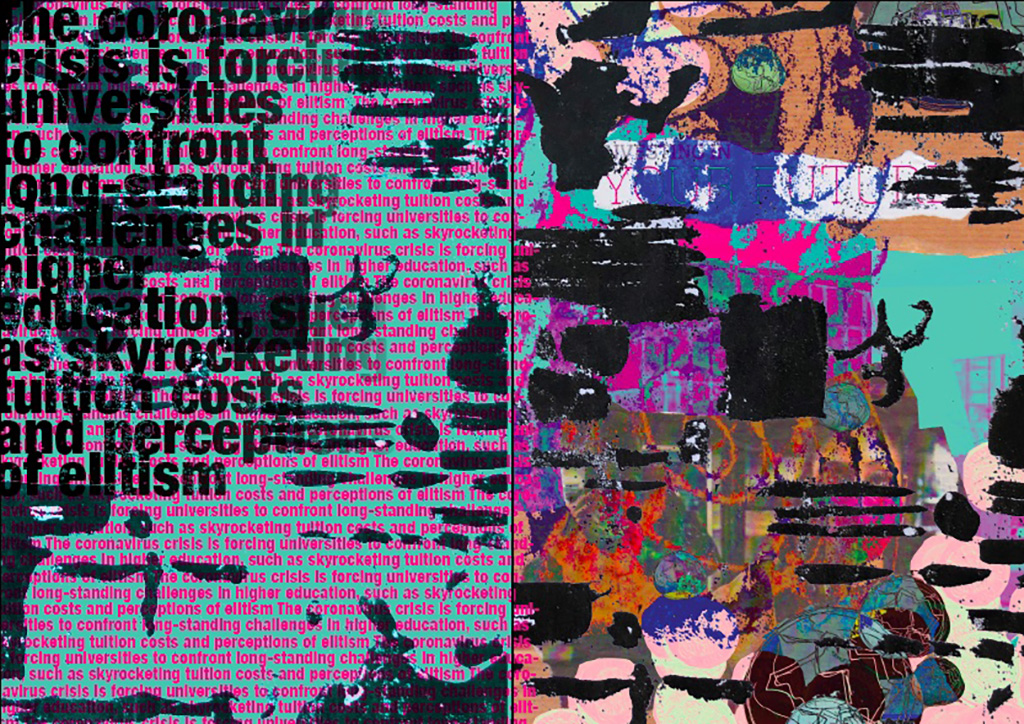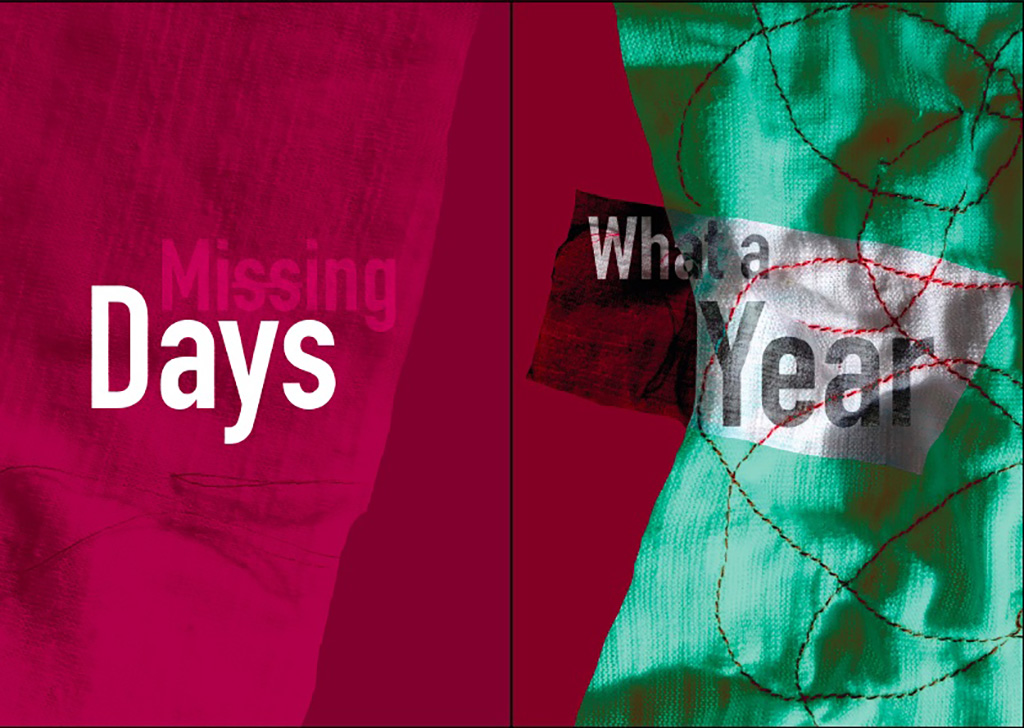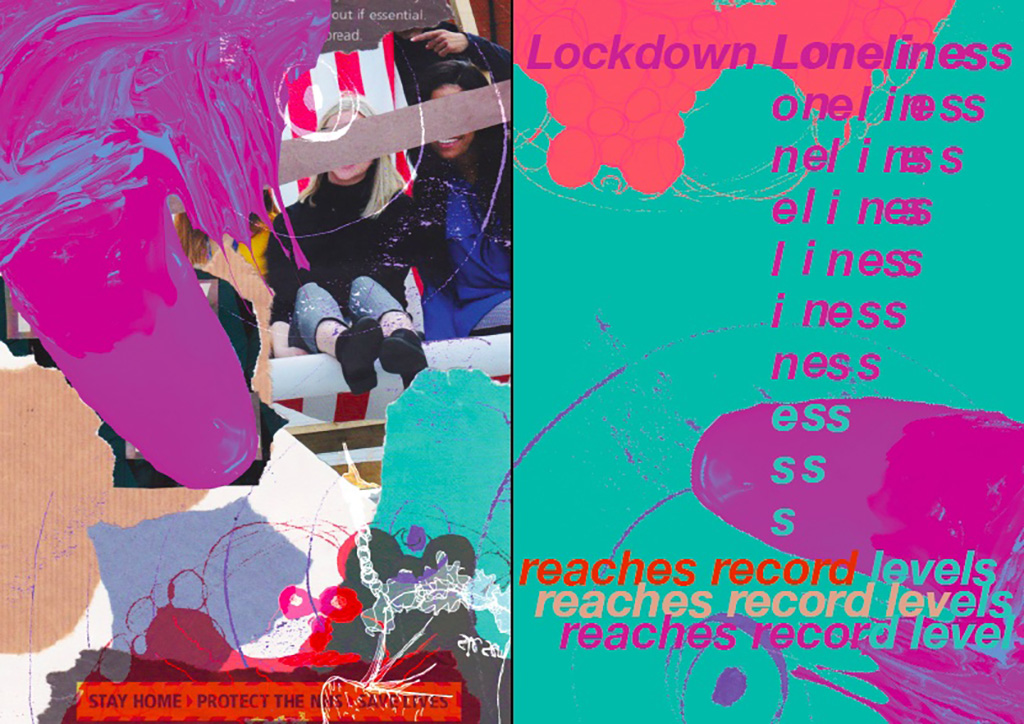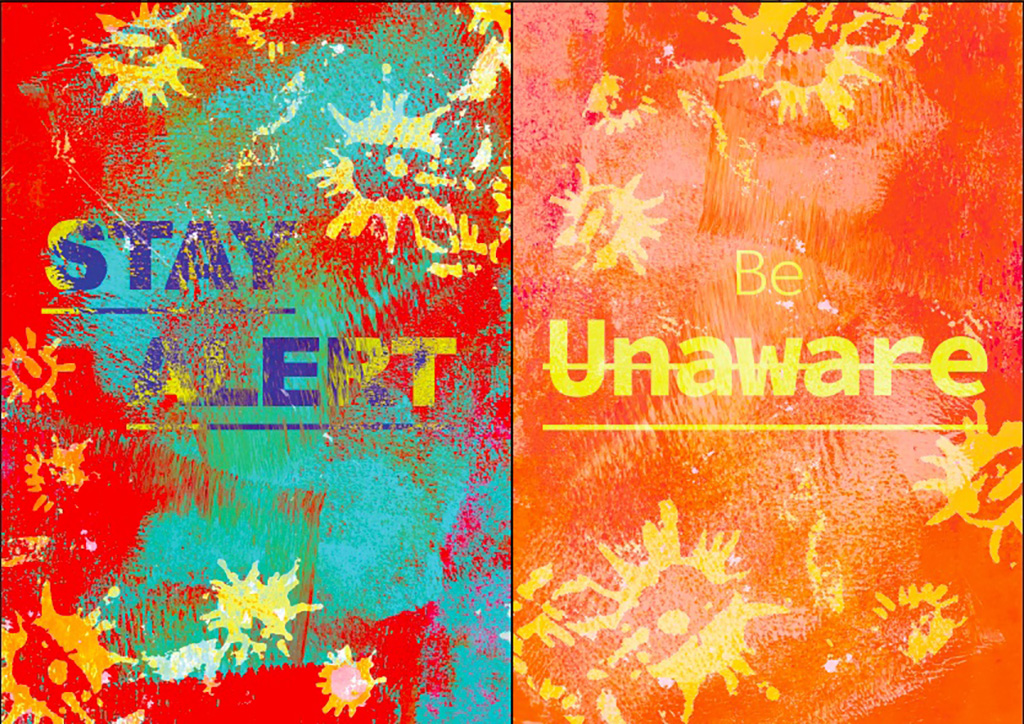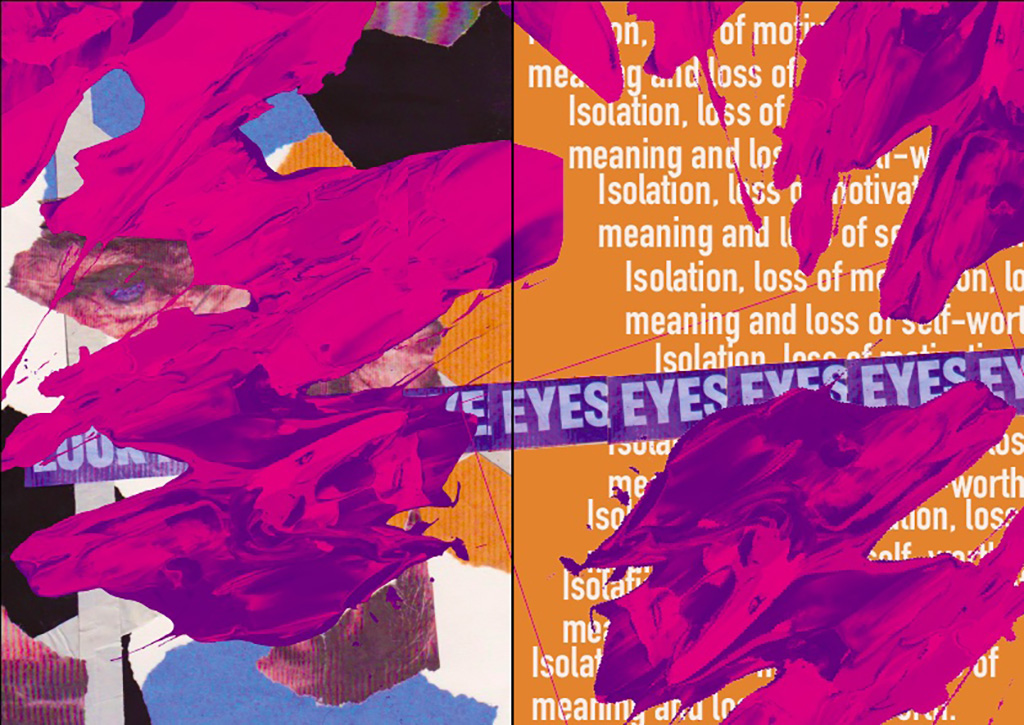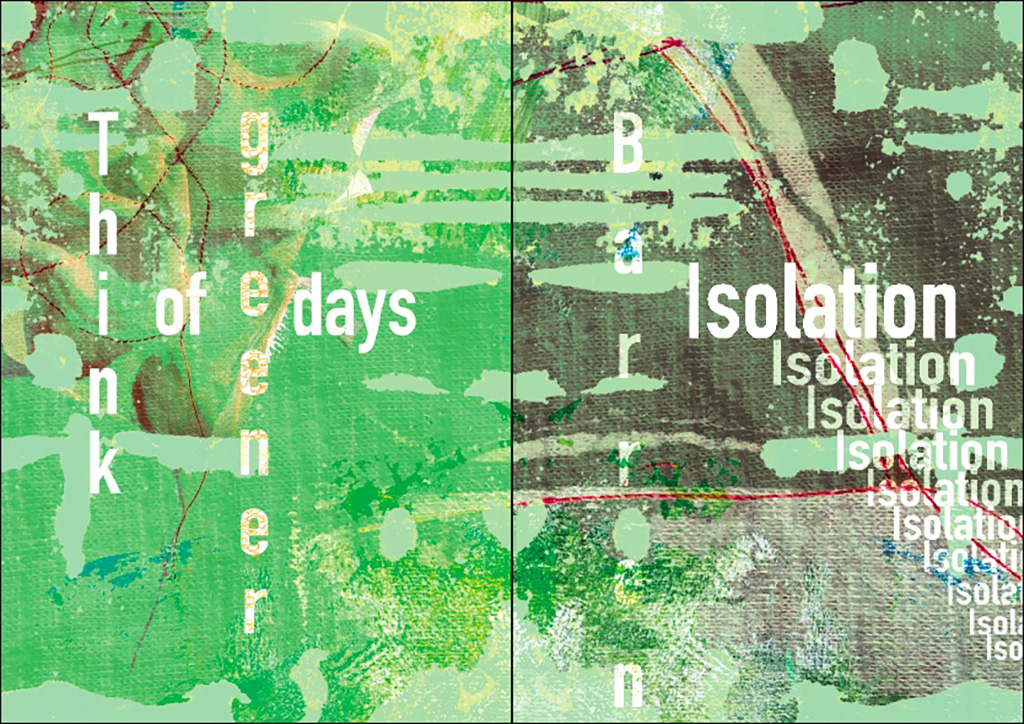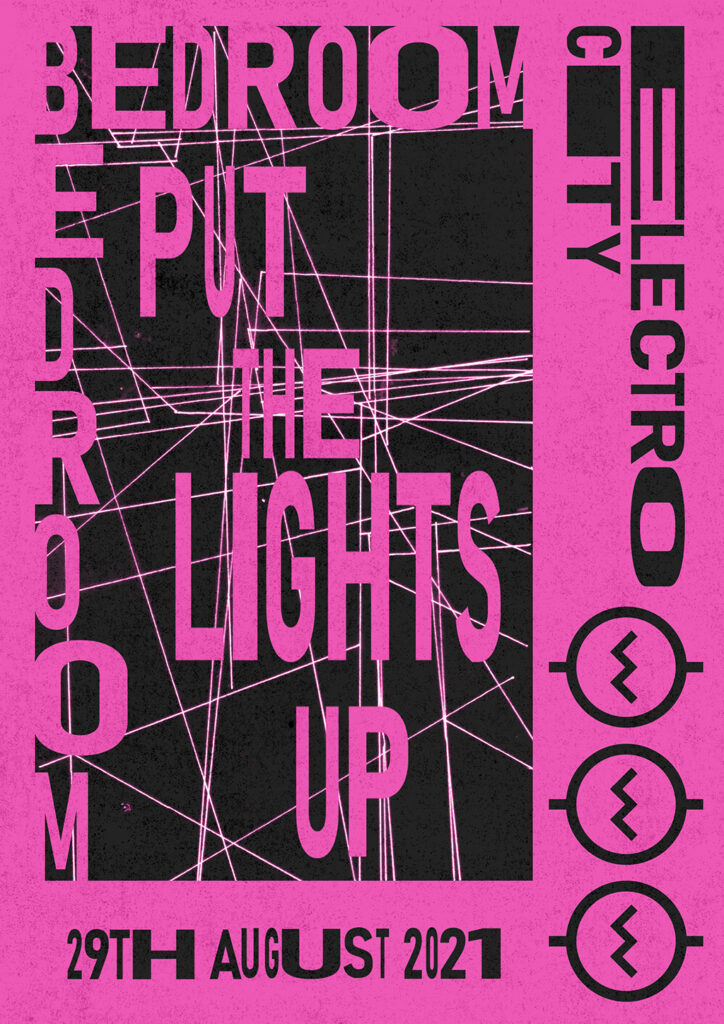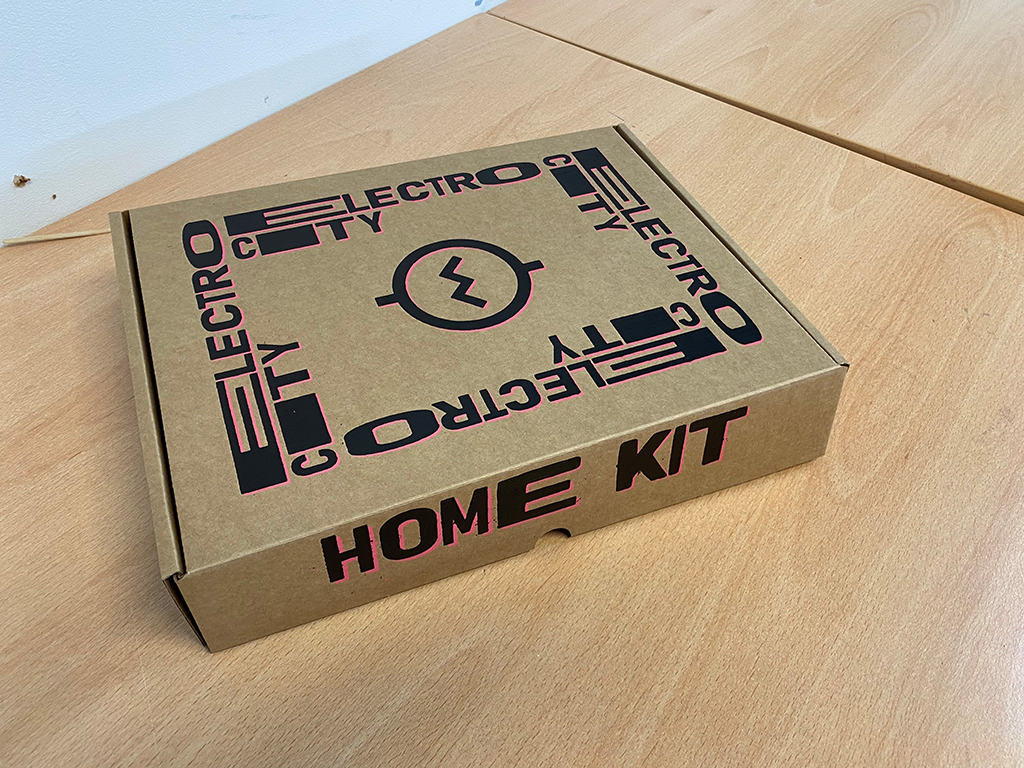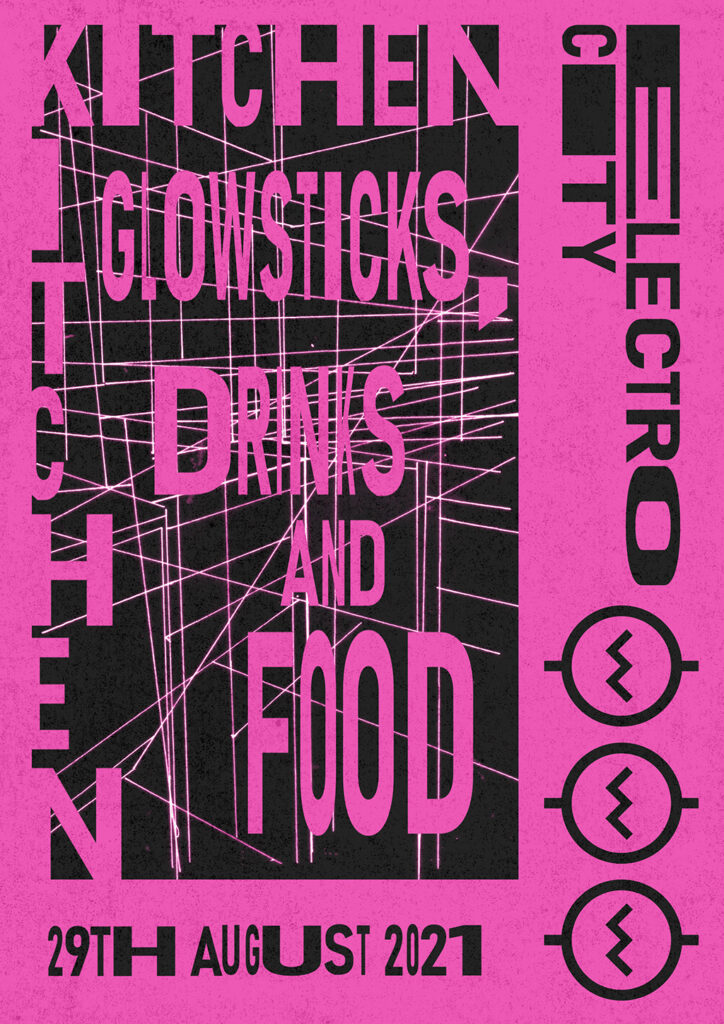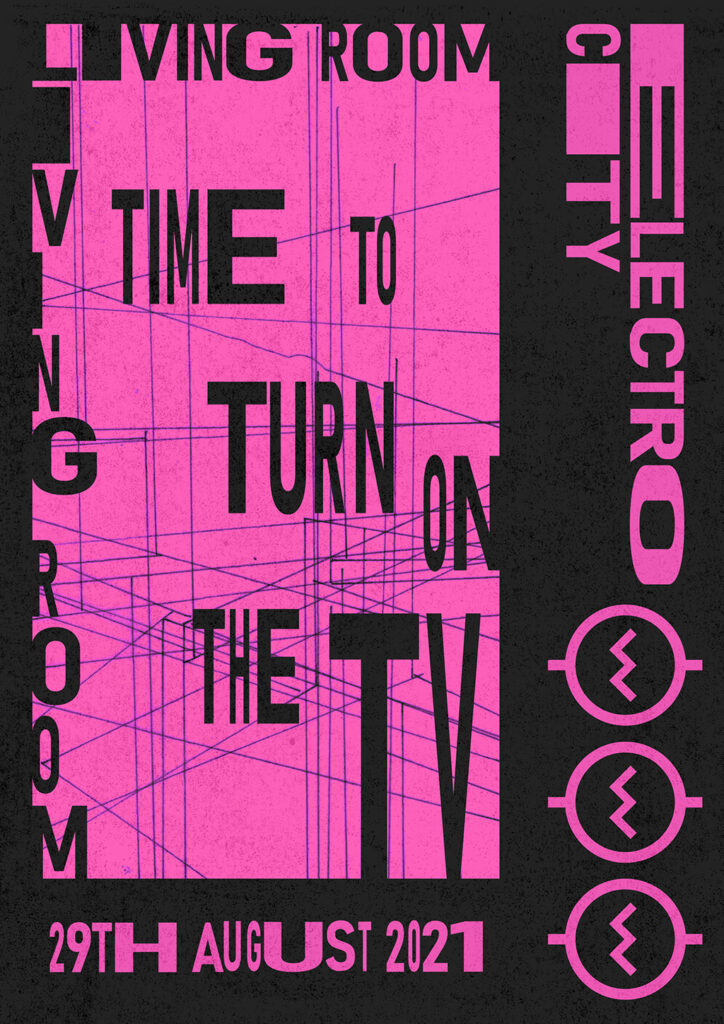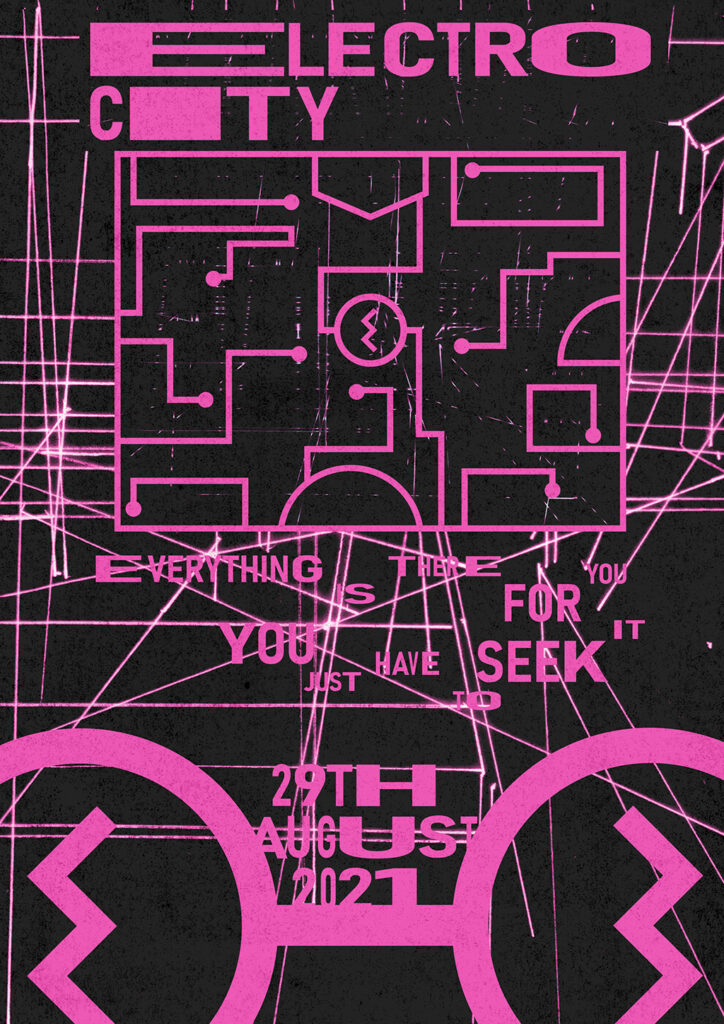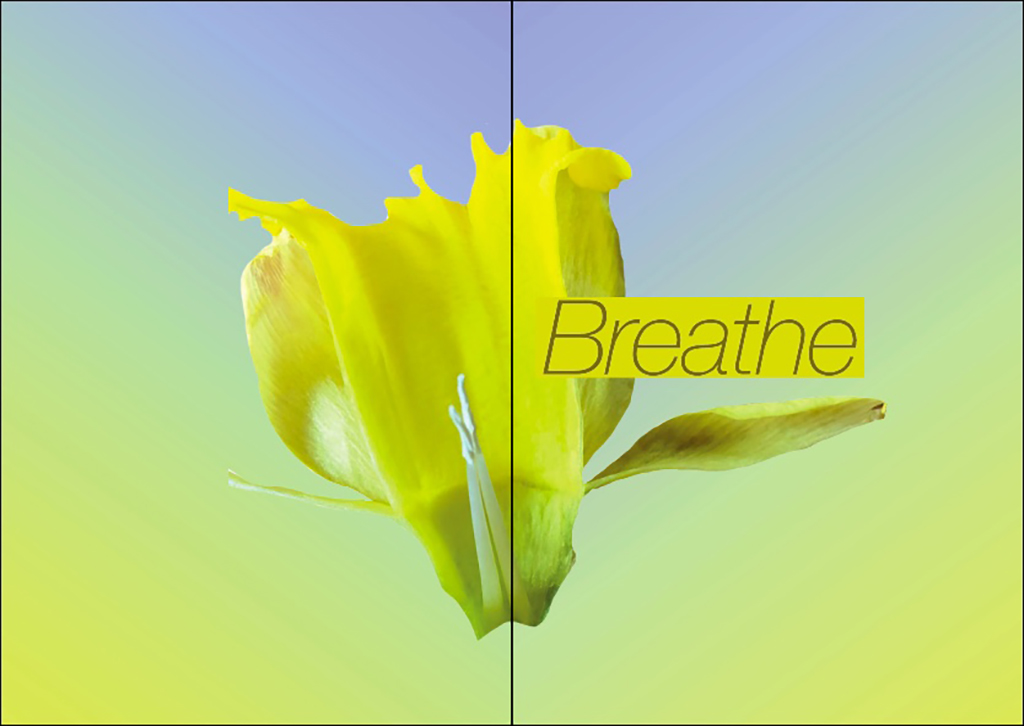
FAD: VISUAL COMMUNICATIONS
Georgia Dovey
Destination: BA (Hons) Photography Leeds Arts University
Perception acts as a lens on how we view reality and this can often become distorted. What we choose to focus on can alter everything around us, but what’s not in focus is still slightly visible –not quite there. As we transition between viewpoints, that space between focus that we don’t acknowledge still exists but only as noise in the background. We may think that reality as a whole is how we view it, but we are distracted by this when in actual fact reality isn’t perceived in a certain fixed way. I haddeveloped my concept from the idea that we as individuals can construct our own reality from our own thoughts, feelings and beliefs.
The solipsism theory and term ‘subjective construct’ both explain that there is no fixed reality beyond how we perceive it, that we all view everything differently. Photographer Paul Mpegi Sepuya had inspired the experimental approaches I explored towards my photography. Sepuya manipulated the perspective through reflection and in camera collage composition which fragmented the subject. This inspired me to alter the subject’s perspective whilst taking the photo by using different materials to hold in front of the lens. Video art ‘The space in between’ by Mirza and Butler explores object representation and surface abstraction through a multi-screen edit technique where the images fluctuate vigorously.
This inspired me to create a video assemblage using photographs of liminal like spaces which accompanied the subject and edit them to flicker vigorously emphasising a fast thought process whilst looking between different viewpoints. In my work, the viewpoint emphasises what the subject is perceiving as well as portraying the subject them self. The pieces suggest this thought process between different viewpoints. The photographs of spaces act as liminal transition spaces whilst the areas that are muted out or unfocused represent individual interpretation.The video assemblage stills fluctuate with the flashing on the screen, which emphasises the vigorous transition between different viewpoints in someone’s perspective.
The flashing is that space we don’t focus on, it appears in our vision for a split second but isn’t as acknowledged. The ambience suggests background noise that is still heard even when not focused on.From the FMP, I have learnt a range of skills and expanded my knowledge in the technical side of photography. I have worked in the dark room developing film and have learnt the technical basics of a film SLR camera and I can develop these new skills further when I progress on to Leedsundergraduate course. I’ve also explored new experimental approaches towards my work through techniques such as physically editing and taking the photograph, I have learnt I have a certain visual eye when I take my photographs which I can develop further in the undergraduate course.
Isaac Jones
I proposed to make concepts and designs for a game centered on mental health that would use an old-fashioned form of illustration called rubber-hose that dates back to the 1930’s. Mental Health has been something that has been a big thing within my life for the past 5 years in terms of my own well-being as well as family and friends; and it is clear that it is an overlooked issue. Seeing as I want to go into the games industry, I thought it would be good to use the idea of a game as a base to explore mental health (an issue I am passionate about).
This was the initial idea that developed more visually during the initial research and project proposal stage where I looked at various artists and decided on a particular art style. The art-styles used feature many vintage aspects such as the 1930’s cartoon style of illustration for the characters and the sepia-toned photographs for the backgrounds; which I chose to use due to my appreciation of the style as well as the darker and grittier look that it brings, which relates very heavily to the more dark and depressing outlook on mental health issues. I think influence came from many places including peers and tutors who both gave new ideas on how I could explore and develop different aspects of my work as well as ideas on how it could be presented.
However, inspiration also came from my research and I think the game Cuphead has influenced my project and idea the most. The illustration style of Rubberhose is similar with the characters. I feel the idea of having these large monsters that have subtle details about them is something that I have learnt from looking and Cuphead. I think the pathway and exploratory stage was great for trying to representing the ideas that I already had so that others could see visually what I was thinking of. It also showed me new ideas in that area of art that I could bring into my own project. However, I wish I had initially explored other forms of media to get a wider appreciation of the topic I was focusing on.
I did make up for this later looking into TV shows, interviews with artist and exploring more of the mental health side with a variety of mediums but doing this at the start would have made this process easier. During this project, I think I have learnt the most about the importance of reflection and research and how it can positively affect the project. Reflections and research has allowed me develop new ideas that I didn’t have at the start and have been some of the most crucial aspects that have brought the project together, such as the ideas of using different techniques with the fine artist anxiety research as well as research into TV and Cinema with Wandavision and Pleasentville which led me to develop the idea of using monoprints as a shadow.
I think when I move on to my undergraduate course this will help greatly as research and reflection help a lot in terms of planning and keeping track of where the project is going. I will also gain a much wider range of ideas to draw from which will make my work much more interesting.
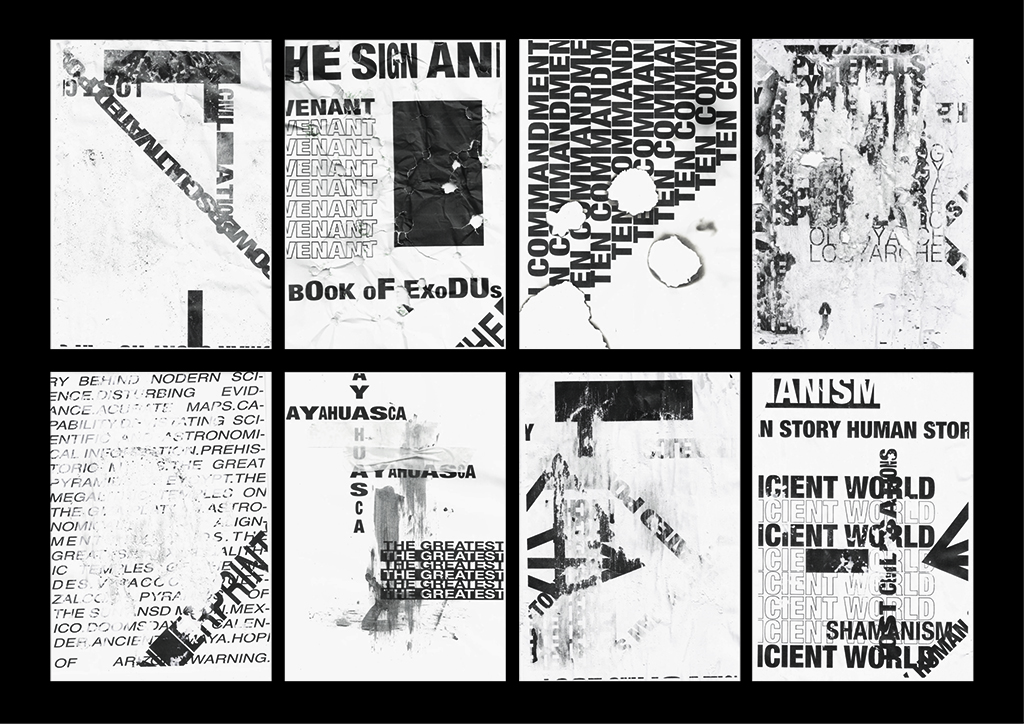
Elliot Luton
Graham Hancock is a pseudoscientist who researches theories about the early years of life. My fascination with aliens and the unnatural theories in life, lead me to Hancock’s theories of how the pyramids were built and that it would be physically impossible for any normal human to do so. His theories on the hidden sectors of history would evoke amotions in any type of person, from fear to excitement, just the fact that even the top scientists can’t explain everything we know about in history, even before touching on the parts we have yet to discover.
My work examines the way that these types of people are treated, the theories and ideas that can be proven but are outside of explanation, are hidden and defaced as they are not understood. Presenting this idea shows how narrow-minded scientists are and the only understanding we have of our history is the words written in black and white.
Chloe Pritchard
Destination: Illustration-BA(Hons) Birmingham City University (BCU)
Confusion, fear and entrapment. Instructed by the new laws and informed by the constant flow of misery after misery. Trapped within the confines of 4 walls where our only escape is to find clarity with the screens in front of us, further binding our eyes and ears to more dreaded news. The past year has been insufferable or a blessing, giving those more free time while also making us feel more alone. Connections have been lost where new ones have formed and our lives still continue while adapting to our new situation. This Sensory overload we have been bombarded with and the clarity in-between has affected the way we feel and talk, especially regarding Covid-19.
My work is a collective of emotion, conflict, imagery and information being kept within the confines of four corners. Detailing the bombardment of media and information with the breaks of clarity we have in-between. The sensory overload of colour, text and imagery conveys the emotions felt and informs us as a reminder to not forget but to converse and allow for an open dialogue of interpretation. It aims to be insightful while commemorating my own thoughts and feelings throughout this pandemic. It is an open collection to the youth and how we have faced parameters while being informed of consequences and risks. We have faced the unknown and continue to overcome with resilience within the confusion of it all.
Inspired by collage, illustration and different media, my work evolved into a topic of discussion surrounding Covid-19. This developed through exploring artists relating to colour, design principles and mark making such as Callen Schaub, inspiring me to use traditional media mixed with my graphic design developing my work from simple collage to a chaotic mixture of colour, imagery and text. Inspiration from Sigmar Polke, allowed the utilisation of illustration in a simple and contemporary way incorporated into a mixture of bombarding and simple imagery. Exploring a mixture of artists from all disciplines allowed me to express this sense of bombardment and overload.
Open dialogue with peers and tutors allowed the incorporation of different ideas and ways to further push my theme. Relying heavily on the opinions of others and my own judgement, determined development and pushed the boundaries of my work. My project within Covid-19. With this constant development, I prepared for all eventualities and displayed different outcomes. I achieved the outcome I desired from the start, communicating and opening dialogue for an audience.
Through completing this course and FMP, lockdown and restrictions have added a disadvantage but have also shown the resilience I have to overcome the parameters and restrictions. I have developed my own perspective towards using different media and explored within these fields. Obtaining a more critical mindset has allowed me to spot details in my work that need improving and this mind set is something I will proceed to use, progressing on to University.
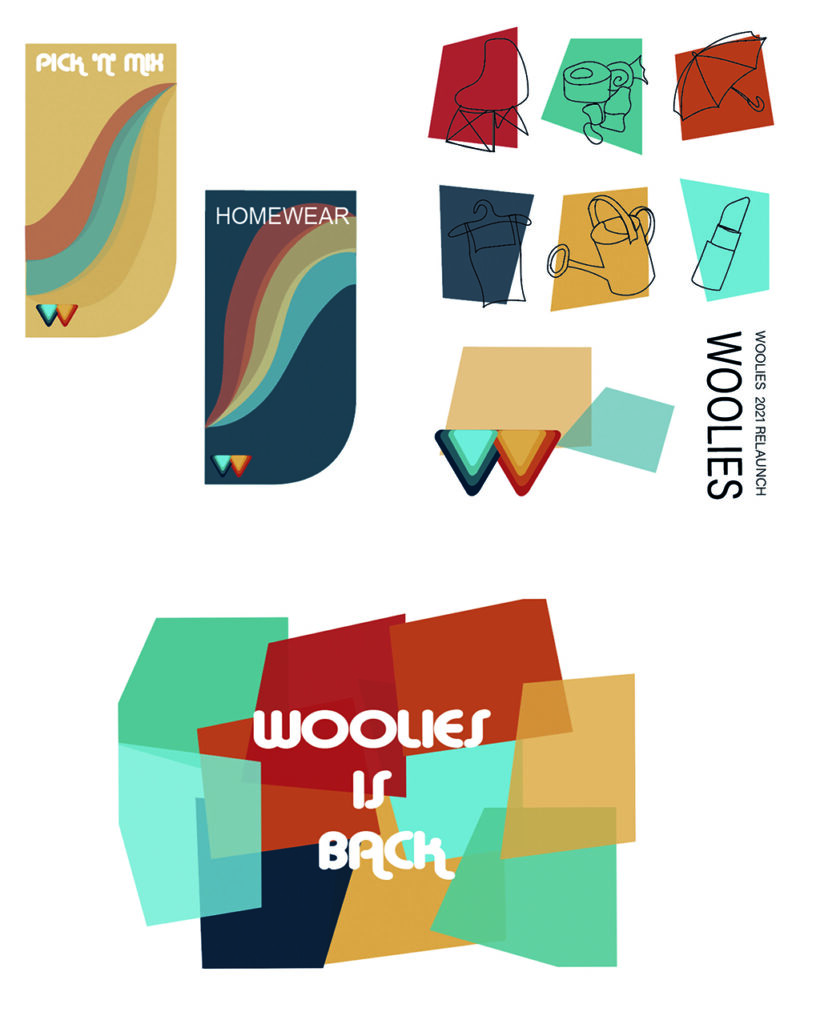
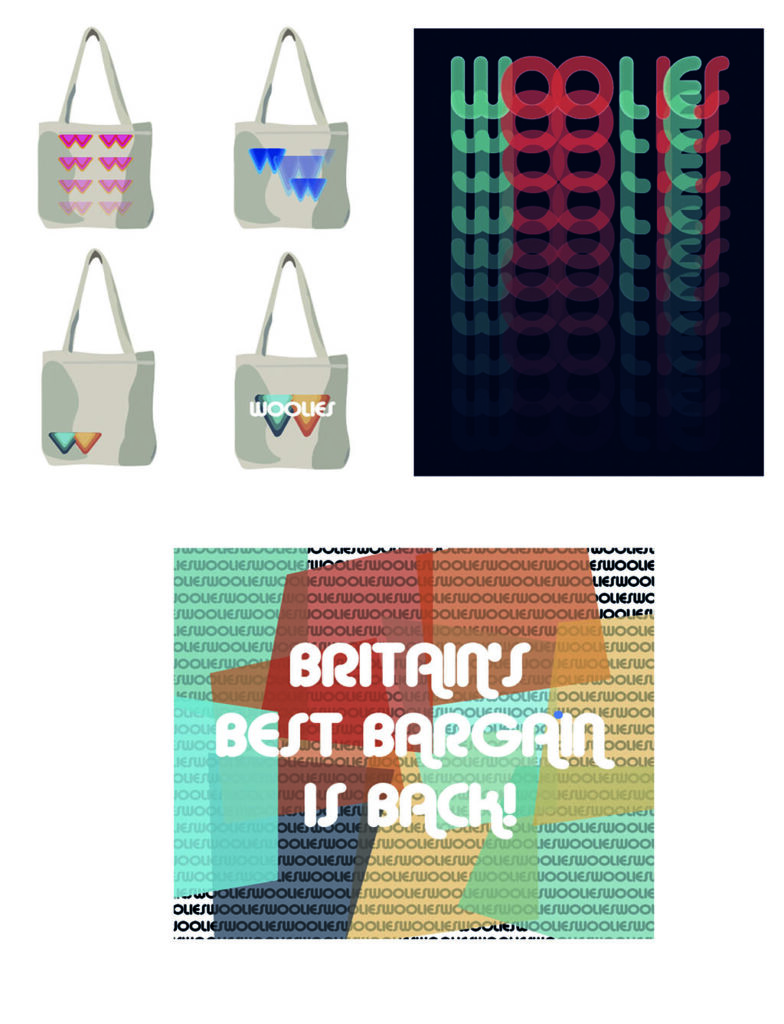

Ellie Walker
Previous Education: Dudley College
Destination: Wolverhampton University Graphic Design
The initial idea for this project was to re-brand the well-known store Woolworth’s. I wanted to create the company in a new light. The idea was to go back to basics and start from scratch with a new company logo, company uniforms, advertisement posters, website, shop signs and shopping bag designs. I initially looked at artists including Saul Bass and Alice Isaac, I found that Isaac’s style wasn’t suited to this project as her work was too complex and abstract. I was hugely inspired by Bass as his work helped me dive deeper into art movement which led me to look at the Bauhaus which became my main inspiration for design. Through this I learnt that using simplistic patterns and shapes worked better as it made the logo design especially more memorable.
I initially didn’t set myself enough targets and for the ones I managed to set I unfortunately didn’t give myself enough time. Through this project I have learnt have to keep up with time scales and set myself aims which I believe will help me for future projects, that I something I will definitely take forward in the future. With help from tutors and peers I was able to get the e feedback I needed in order to make my designs the best they could be, I personally feel critical feedback is key when sharing pieces of work as it helps you see things from other peoples point of views which can also sometimes change your opinion on your own work, for the better.
Through feedback it allowed me to change my logo design completely in the initial design process, for a basic corporate logo, into a quirky retro design. It also allowed me to bring Woolworth’s into the 21st century, changing the name from Woolworth’s to Woollies and changing the idea of creating a website into creating an Instagram page. This was much easier to set up and allowed me to increase my target audience to the younger generation rather than just the older generation for the nostalgic value. Although I liked the idea of the nostalgic feel, I didn’t want that to take over from reality and I wanted the brand to be taken seriously, with the retro aspect I feel as though I captured this perfectly. I believe that despite a few hiccups the project came together well.
From this I will now analyse my work to a better quality making sure my reviews and evaluations of work are in more detail and of better quality and I will also learn how to manage time more efficiently. This year has allowed me to work on my specialist subject in a more mature way and has allowed me to find my own style. I have also learnt to be confident in my own work especially if I am pleased with something I have created and how to make other people believe my work is of a high standard. I hope from this past year I can now take on my skills to university and any future career I am able to achieve.
Joseph Woodcock
Previous Education: Joseph Woodcock
Destination: BA Graphic Design with a Placement Year Loughborough University
The initial idea for his project was to create branding for a new and upcoming EDM festival that was trying to tackle the issue of coronavirus we face today. As I began to work with the project I found routes around the issue we face today. I wanted to create a box that would be shipped to your house that would contain a range of elements that would allow you to set up your own festival in your house. Through initially looking at artists Harrison Pollock and Jack Teagle, I found my theme of ‘hyper reality’, which developed into my own take on the theme through researching films and multiple other artists. I choose to delve into this as it strongly relates to simulation and have strong futuristic ideology. This worked well inside the genre of my music which pushes electronic noises and have links to both the past and the future, which when mixed together, creates for amazing visuals, and I think I achieved this with great success.
This project had a large influence from others around me and they all helped push my project further. Initially I set myself a rough timetable. However, through constantly reviewing work and talking with my three tutors, I managed to refine this and found a great pattern of work then review that helped keep me on track. I have managed to achieve my main goal in my project by doing this however, I did have a range of opponents that didn’t end up being formulated. These include: a website, virtual tickets, VR headset and a range of other promotional work. The time I spent focusing on the four elements of this project allowed me to create a far better quality of work that held strong references, and allowed me to explore a diverse range of techniques that helped develop my skills. I do however, feel as though I could have started stronger in terms of this and this may have allowed me to create a wider range of final piece. Overall, I am extremely pleased with my management of this project and if I was to do it again I would have put more time into configuring my initial timetable.
One of the main things I will take away from this project is an ability to integrate far more hand rendered work into my digital works. This year has allowed me to develop my specialist practice and my own unique style which has informed what I want to create as I move to the next stage of university. I have also learnt how to review and look back at my project. It’s taught me to not veer away from the project at hand and to keep focus on what I want. I think at the start of this year I was susceptible to this but my focus has changed and I have a far more knowledge on how to keep a structure to my time and how I can distribute my time around. This is a great skill to have developed at this stage and will only grow as I head towards my career.

